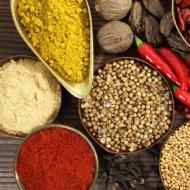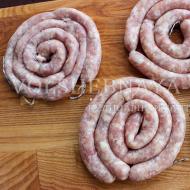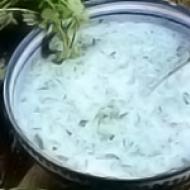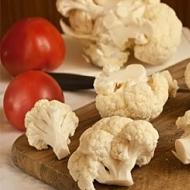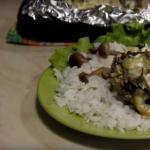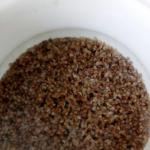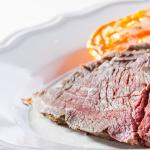
Classification of mushrooms and determination of their good quality. Classification of edible mushrooms. Categories of nutritional value of mushrooms 3 groups of mushrooms

Depending on the structure of the cap, it divides mushrooms into spongy (tubular), lamellar and marsupial. Sponge mushrooms - aspen mushroom, boletus mushroom, butter mushroom, moss mushroom. The bottom of the cap of these mushrooms has the appearance of a sponge, which consists of thin tubes containing spores.
Lamellar mushrooms - russula, chanterelles, honey mushrooms, champignons, saffron milk caps, milk mushrooms. The bottom of the cap has the form of plates that diverge radially towards the periphery. The plates contain spores. Marsupial mushrooms - morels, truffles, the spores of which are found in special bags.
Every year, Russian forests produce a large number of edible mushrooms. They are also found in the steppe zone, in forests, artificial forest plantations, and in shelterbelts. Mushrooms belong to a large and widespread group of organisms, and a certain part of them is used by humans in nutrition.
But it should be remembered that among the mushrooms there are many poisonous ones that can cause severe poisoning and sometimes even death. These are mushrooms such as toadstool, Patouillard fiber, orange-red cobweb and many others. That's why mushroom classification It is also produced for nutritional properties. Divides mushrooms into three main groups - edible, conditionally edible and poisonous.
Edible mushrooms (ceps, boletus, aspen, boletus, honey mushrooms, real mushrooms, chanterelles) are prepared in the usual way, without special culinary processing. These are mushrooms of the first category. Their fruit bodies do not contain bitterness, harmful substances or unpleasant odor.
Conditionally edible mushrooms. The fruiting bodies of such mushrooms contain bitterness, harmful substances, unpleasant taste, etc., and are eaten only after prolonged soaking, salting or boiling, with the obligatory removal of the decoction. Such mushrooms must first be boiled for 7-10 minutes, the broth must be poured out, and only after such careful processing can they be fried or boiled (wrinkles, russula) or soaked in cold water, changing it often (bitter mushrooms, milk mushrooms, nigella, etc.) to get rid of a substance that irritates the stomach and can cause poisoning.
Poisonous mushrooms include toadstool, fly agaric, poisonous entoloma, orange-red cobweb and the like. The most dangerous is the toadstool. It can easily be confused with russula. Its venom acts like that of a snake.
All parts of the toadstool are poisonous, even the spores. The deadly poisonous substance contained in this mushroom is not destroyed even after drying or salting. According to some data, the number of edible mushrooms that reach a person’s table, even in “mushroom years,” is about 10-15 species. At the same time, on the territory of Russia there are about 40 species of poisonous mushrooms, of which 10-15 species are especially dangerous. Some of them resemble edible mushrooms in appearance.
For example, among the tubular mushrooms there is a species known as pepper mushroom and several species of the same inedible and conditionally edible mushrooms. Some mushrooms, like porcini and boletus, can be confused with the gall mushroom, in which the lower surface of the cap is white, eventually turning pink. The cap of the porcini mushroom is also white at first, and then becomes yellowish or greenish. Fake honey mushrooms are very similar to edible ones; not every mushroom picker will immediately notice the difference, especially in the evening, when most of them are sorting through mushrooms after a trip to the forest.
Among mushroom pickers, there are many beliefs, so-called “signs,” about how to distinguish whether there are poisonous mushrooms among the collected ones. These signs cannot be trusted! Thus, some mushroom pickers believe that poisonous mushrooms are not affected by worms and that the poison in mushrooms can be eliminated (neutralized) if they are boiled with kitchen salt or vinegar - this is an old method, but completely ineffective.
Obviously, the most effective way to avoid poisons is to eat only well-known edible mushrooms. You also cannot rely on the smell and taste of the mushroom, since the most dangerous, even deadly poisonous wild mushrooms, such as orange-red cobweb, toadstool, common toadstool and many others, can have a pleasant smell and taste. The exception is the species of fungi of the genus Inocoebe (splitter), which have an unpleasant odor.
But you should also remember that it is possible to be poisoned by edible mushrooms if they were poorly stored, prepared, or collected old, damaged or diseased. It is better to collect mushrooms in a basket, because mushrooms can become moldy in a plastic bag. Mushrooms should only be consumed when they are freshly prepared. You should not reheat mushrooms several times, but should eat them on the day of preparation.
(edible) for their nutritional value and taste.
Edible mushrooms are divided into four groups. The first group is the most delicious mushrooms. Mushrooms, which are rich in protein, vitamins and various minerals. These mushrooms include boletus, milk mushrooms and saffron milk caps. The second group includes mushrooms that are not so tender: boletus, boletus, boletus, champignons. The third group of mushrooms are chanterelles, fly mushrooms, and russula. The fourth is all other edible mushrooms.
Mushrooms smell a variety of different odors. Mushrooms may smell like anise, fragrant cinnamon, flour, onions, garlic, herring, wood, apples, radishes and even strawberries. Based on their taste, they also classify mushrooms into: fresh, sour, bitter, sweet, spicy, flaky, pungent or simply unpleasant. Classification of mushrooms according to external characteristics - bare, scaly, smooth and fibrous.
Mushrooms are one of the most interesting and most secret phenomena of nature, a valuable food product and even medicine. Classifying mushrooms according to their varied characteristics divides mushrooms into many different species.
We watch a video of edible mushrooms in Germany - the same mushrooms as in Russia
Based on the structure of the cap, mushrooms are divided into tubular, lamellar and marsupial. In tubular ones, the lower surface of the cap consists of the thinnest tubes, in lamellar ones - from thin plates located radially from the stem to the edge of the cap. The cap of marsupial mushrooms is wrinkled with depressions (bags) in which spores are located.
Mushrooms are divided into edible and poisonous. On the territory of the former Soviet republics, approximately 150 species and varieties grow, and an even larger number of inedible and poisonous ones.
Based on their taste, mushrooms are divided into 4 categories.
The first includes the most valuable mushrooms: porcini mushroom, saffron milk cap, milk mushroom;
to the second boletus, boletus, buttermilk, champignon, volushka, white mushroom, smoothy, white mushroom, black milk mushroom;
to the third - moss mushroom, goat, morel, russula, chanterelle, line, honey fungus, valui, serushka;
to the fourth - all the others, used mainly for pickling: bitter, violin, black podgruzok, ryadovka.
According to the method of spore formation, fungi are divided into two main groups: basidiomycetes and marsupials.
Basidial mushrooms are divided according to the structure and location of the spore-bearing layer into three groups or families: spongy or tubular (ceps, Polish mushrooms, boletus, boletus, oiler, moss mushroom, goat mushroom and swamp mushroom); lamellar, which are divided into two subgroups: some secrete milky juice at the break (falcon, milk mushroom, volnushka, podgruzd, nigella, gladysh, white), others do not have this juice (chanterelle, russula, greenfinch, row, value, honey fungus, champignon) ; blackberry (yellow blackberry, variegated blackberry).
Marsupial mushrooms are divided into two groups: above-ground (strogs and morels) and underground (truffles).
Common oakweed* 2
Speckled oakweed* 2
Lamellar mushrooms
* Mushrooms marked with an asterisk are eaten mainly fresh (fried, boiled, baked).
The good quality of fresh mushrooms is determined by their appearance. and the use of flabby, overgrown, slimy, moldy, and blackened mushrooms is not allowed. Using mixtures and crumbs of various mushrooms for food purposes is also strictly prohibited. In appearance, fresh mushrooms should be whole, uncrumpled, sorted by type, cleared of debris, soil, sand, pests and mucus.
When establishing the good quality of fresh edible mushrooms, the following is determined: the shape of the cap and stem; cap skin color; color of the bottom of the cap; the color of the flesh at the break; consistency; smell; taste; the presence of old, overgrown mushrooms; the presence of mushrooms damaged by insects and molds.
If tribes are difficult to identify by species, then it is better to discard them immediately, since even one poisonous mushroom caught in a basket can cause poisoning.
Mushrooms are divided into four groups according to gastronomic characteristics. This classification is widely known and convenient for distinguishing between species that are dangerous and harmless to human health.
Group of edible mushrooms combines species that do not require pre-treatment before consumption. They can only be cleaned of dirt and rough tissues and doused with boiling water.
All these mushrooms are divided into four subgroups based on nutritional value and taste.
The first subgroup includes real milk mushrooms, porcini mushrooms, and saffron milk caps.
The second includes boletus, champignons, boletus, boletus, etc.

The third includes morels, autumn honey mushrooms, chanterelles, and moss mushrooms. To the fourth - dung beetles, oyster mushrooms, rows, talkers. This division into subgroups of more or less valuable mushrooms is arbitrary and differs in different countries. Thus, in Russia, the real milk mushroom is classified as a subgroup of the most nutritious and tasty mushrooms, and in a number of European countries this species is generally recognized as inedible. But oyster mushrooms, on the contrary, are highly valued in Europe, unlike in the CIS countries.

To conditionally edible mushrooms included those species that contain poisonous components in their fruiting bodies, bitterness, which can dissolve in water during cooking, and are also often inactivated during prolonged drying. This group unites almost all types of morels, milk mushrooms, and milk mushrooms. After boiling such mushrooms, the water must be drained.
Mushrooms from the group inedible do not contain poisons, but are not suitable for human consumption, as they have a bitter taste or unpleasant odor, or are excessively hard. These phenomena are not eliminated even by cooking, as in the case of gall fungus.
The fourth group is poisonous mushrooms. The fruiting bodies of such mushrooms contain poisons and toxins that cause poisoning in humans. Thus, when eating strings, severe poisoning is manifested by disorders of the central nervous system with the development of convulsions, delirium, as well as shortness of breath and jaundice. Possible death.
Less dangerous are poisonings from mushrooms with a local stimulating effect, manifested by mild disorders of the gastrointestinal tract. They can be caused by rows, some types of champignons, milkweeds, and russula.

Fungi that affect human nerve centers due to the content of the alkaloid muscarine include fly agarics. When they are consumed, hallucinations, behavioral and visual disturbances, even death, occur.
The most dangerous are such deadly poisonous mushrooms as stinking fly agaric, toadstool, false mushrooms, and lepiota.
and the term group of mushrooms in their classification
✎ Principles of dividing mushrooms into groups
In addition to the generally accepted names of mushrooms, modern science also gives their names in Latin, because the popular names of mushrooms, in most countries, are not at all the same, they are often interpreted differently and can lead to confusion or incorrect identification of their species. One can come to exactly the same erroneous conclusion when defining the concept groups of mushrooms.
All mushrooms known in nature are grouped into genera. The genus, as a fully defined category, is the basic structural unit of any system of the organic world and, in turn, is divided into species. A species is considered the main structural unit of the biological systematics of living organisms and consists of subspecies, united first into genera and then into families. This means that all types of mushrooms can be divided (classified) according to characteristic features into:
So, if we proceed solely from external parameters (sizes), then all mushrooms should be divided into only 2 large groups of mushrooms:
m A Cromycetes(from the Greek makros - large and the Greek mykes - mushroom) - mushrooms whose fruiting bodies are macroscopic (or large) in size, that is, forming large formations that are clearly visible to the naked eye,
m And Cromycetes(from the Greek mikros - small and mykes - mushroom) are mushrooms and mushroom-like organisms of microscopic size.
But the term micromycetes is used solely for the convenience of mycologists and does not carry any systematic load, that is, this is not some special taxon.
And therefore, when defining the concept of a group of fungi, it was customary to proceed from the morphology of the fruiting bodies of fungi, that is, their reproductive part, formed from intertwined hyphae (threads) of the mycelium (mycelium). And in this case, it became necessary to divide all mushrooms into 3 separate groups in the following order:
- macromycetes;
- gasteromycetes;
- myxomycetes,
and these include representatives of both orders:
The first 2 groups represent the combined group m A Cromycetes(lat. Macromycetes), with representatives of the department of higher fungi and imperfect fungi, and the 3rd represents the group m And Cromycetes(lat. Micromycetes), which, in addition to representatives of lower fungi and tearworms (mushroom-like organisms), also includes all other microscopic fungi, such as yeast and mold.
✎ Main groups of fungi and mushroom-like
The first group includes macromycetes. These are mushrooms that form large fruiting bodies, clearly visible to the naked eye. For example, the well-known cap mushrooms (basidiomycetes) are macromycete mushrooms. Among the macromycete fungi that are capable of forming fairly large fruiting bodies and large accumulations of mycelium, there are symbiotrophic ones - those that form mycorrhiza (fungal roots), and saprotrophic ones - those that decompose dead organic remains. These include many representatives of the classes Basidiomycetes and Ascomycetes, such as:
symbiotrophic fungi (or mycorrhiza-formers), which form mycorrhiza on the roots of trees and shrubs;
saprotrophic fungi, which carry out all life processes at the expense of dead organic matter;
litter and humus fungi, on which the intensity of all biological processes in the cycle of substances in forest communities depends;
carbotrophic fungi (thermophilic fungi), which inhabit the sites of old forest fires and forest fires;
coprotrophic fungi, which process any organic substances found in animal excrement;
mycotrophic fungi, which develop exclusively on the mummified fruiting bodies of cap mushrooms;
bryotrophic fungi, confined to sphagnum bogs, which decompose dead parts of sphagnum and green mosses;
xylotrophic fungi that settle on living wood, being wood-destroying fungi.
The second group includes Gasteromycetes. These are mushrooms that are characterized by an angiocarpous (closed) structure of the fruiting bodies and, during puberty, are capable of either opening in various ways or remaining completely closed. It was this characteristic feature that was initially used as the basis for the identification of this taxon (group in the classification), but it was later abandoned and today the term gasteromycetes refers only to the morphology of fruiting bodies.
It is certainly clear that:
the macromycete group is represented by the department of higher fungi with multicellular mycelium;
the gasteromycetes group is also represented by the department of higher fungi with multicellular mycelium;
The myxomycetes group combines representatives of three divisions at once:
Imperfect fungi, with all the inherent characteristics of basidiomycetes and marsupial higher fungi, but only with asexual reproduction,
Lower fungi, with unicellular mycelium (mycelium),
Fungus-like organisms, with the absence of mycelium and the cellular and non-cellular structure of the fruiting bodies.
Nature is multifaceted and there is a great diversity of all kinds of animals, plants and microorganisms. However, there is one unique kingdom, unlike all the others, combining the characteristics of both plants and animals - these are mushrooms. Their classification is very extensive and ambiguous. They are divided according to various criteria. The most valuable among them are considered to be category 1 mushrooms.
Classification of mushrooms
There are a huge number of different types of mushrooms on earth. There are about two hundred varieties in total. It is noteworthy that there is no single generally accepted classification. It may be different in different regions within the same country.
As you know, mushrooms of the first category are of greatest value, because they have the highest indicators for all characteristics. It is worth considering in more detail the following types of mushrooms:
- White mushroom or boletus.
- The breast is real.
- The fox is real.
- Pine and spruce saffron milk caps.
Porcini has a wide fleshy leg and a convex cap. Young individuals are distinguished by white, fleshy pulp; in older individuals, it is stratified into fibers and has a yellow color. They reach a fairly large size: the height of the leg can sometimes be about 25 cm, it has a club-shaped or barrel-shaped shape. The hat has a whitish or reddish tint and is quite massive. Widely distributed in all forest zones, including the Arctic.

